Patterned California Snakes

| Look for a picture that is similar to the snake you want to identify, read the brief descriptions of behavior and habitat, look at the range map to see where the snake is found, and if everything fits your snake, click on the link to continue your search. |

| These are snakes found in California with a strong pattern that is blotched, saddled, spotted, or irregularly banded, with no rattle on the tail. Rattlesnakes in California are treated separately. Some of the patterns on these snakes might be confused for banding when the blotches extend down the sides of the snake, but as defined here, bands are strongly delineated markings that circle the body or stop on the sides, whereas blotches are less well-defined and often are wider on top then become thinner on the sides, like wedges. Only rattlesnakes in California are dangerously venomous (which is commonly but incorrectly called "poisonous".) None of the patterned snakes shown on this page have venom that is considered dangerous to humans, but the Lyresnakes do have a mild venom that is not typically mediclly significant, but can produce an unpleasant reaction, so it should be avoided. |
|||
Gopher Snakes - Pituophis catenifer |
|||
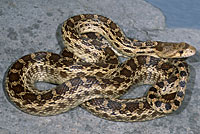 |
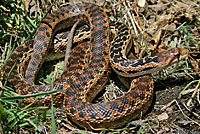 |
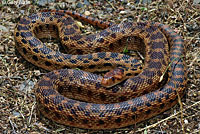 |
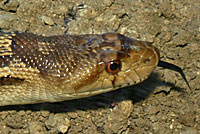 |
 |
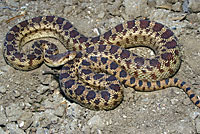 |
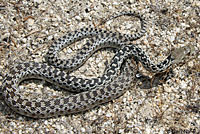 |
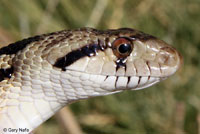 |
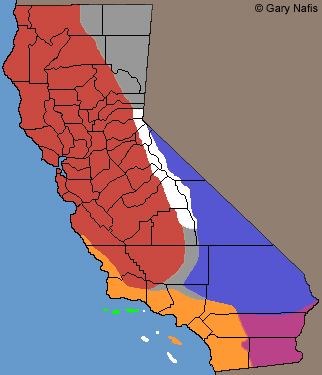 |
|||
| Ranges of the four forms of Gophersnakes found in California. Click on the map for a key to the different forms. |
|||
| ---------------------------------------------------------------------------------------------------------------------------------------------------------------------------------------------------------------------------------- | |||
Lyresnakes - Genus Trimorphodon |
|||
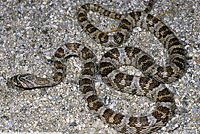 |
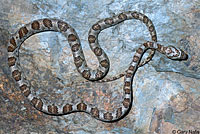 |
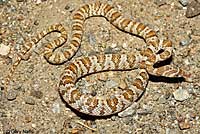 |
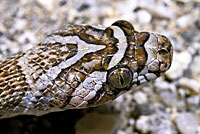 |
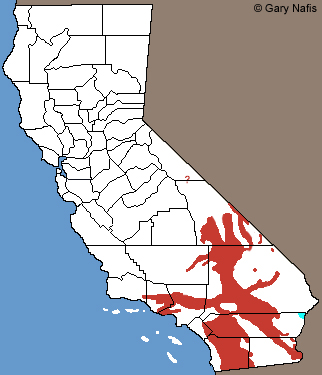 |
|||
| Red and Orange: Ranges of the two species of Lyresnakes found in California. Click on the map for a key to the species. |
|||
| ---------------------------------------------------------------------------------------------------------------------------------------------------------------------------------------------------------------------------------- | |||
Spotted Leaf-nosed Snake - Phyllorhynchus decurtatus |
|||
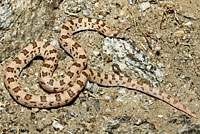 |
 |
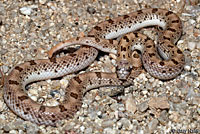 |
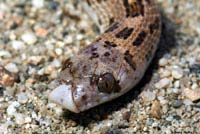 |
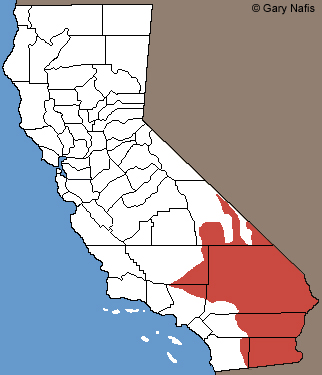 |
|||
| Red: Range of the Spotted Leaf-nosed Snake in California |
|||
| ---------------------------------------------------------------------------------------------------------------------------------------------------------------------------------------------------------------------------------- | |||
Coachwhips (Racers) - Masticophis flagellum and Masticophis fuliginosus |
|||
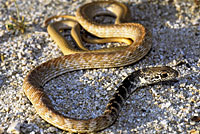 |
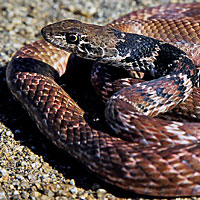 |
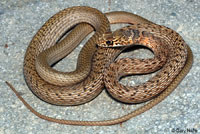 |
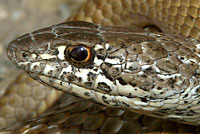 |
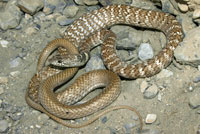 |
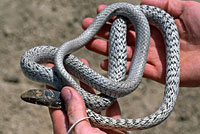 |
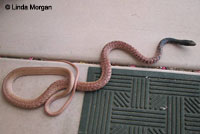 |
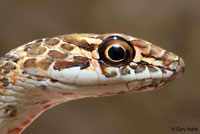 |
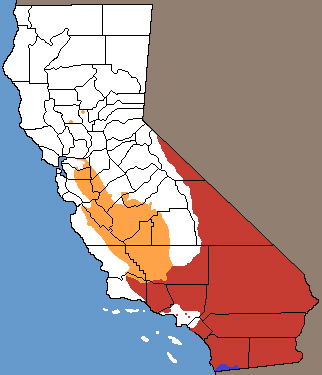 |
|||
| Red, Orange, and Blue: Ranges of Coachwhips in California. Click on the map for a key to the names. |
|||
| ---------------------------------------------------------------------------------------------------------------------------------------------------------------------------------------------------------------------------------- | |||
Glossy Snakes - Arizona elegans |
|||
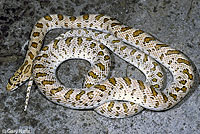 |
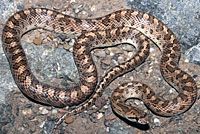 |
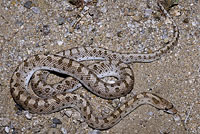 |
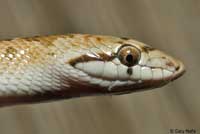 |
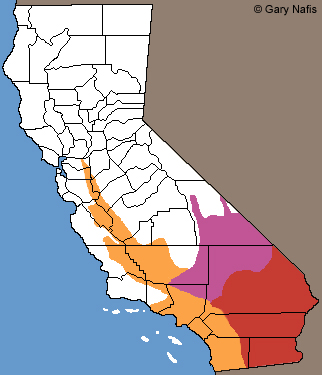 |
|||
| Red, Orange, and Purple: Ranges of Glossy Snakes in California. Click on the map for a key to the names. |
|||
| ---------------------------------------------------------------------------------------------------------------------------------------------------------------------------------------------------------------------------------- | |||
Night Snakes - Genus Hypsiglena |
|||
 |
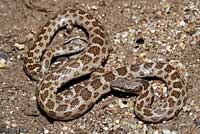 |
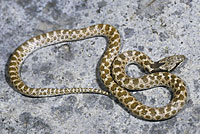 |
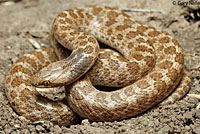 |
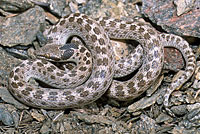 |
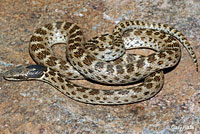 |
 |
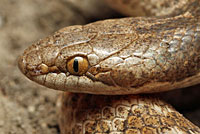 |
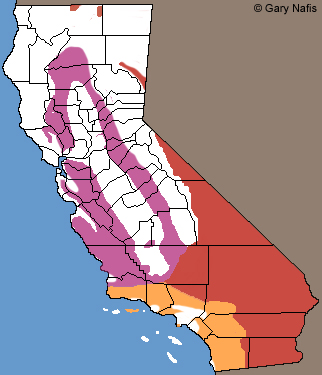 |
|||
| Red, Orange, and Purple: Ranges of Nightsnakes in California | |||
| ---------------------------------------------------------------------------------------------------------------------------------------------------------------------------------------------------------------------------------- | |||
Juvenile Western Yellow-bellied Racer - Coluber constrictor mormon |
|||
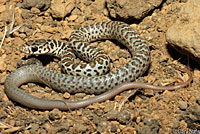 |
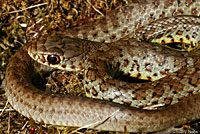 |
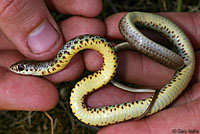 |
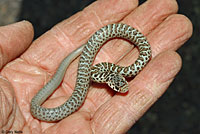 |
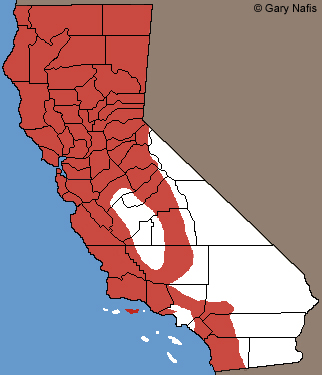 |
|||
| Red: Range of the Western Yellow-bellied Racer in California |
|||
| ---------------------------------------------------------------------------------------------------------------------------------------------------------------------------------------------------------------------------------- | |||
Sierra Gartersnake - Thamnophis couchii |
|||
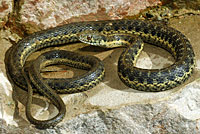 |
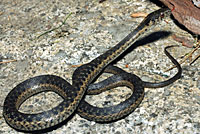 |
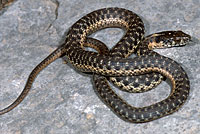 |
 |
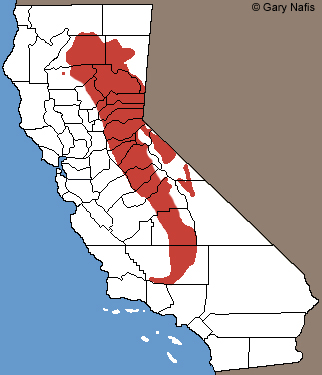 |
|||
| Red: Range of the Sierra Gartersnake in California |
|||
| ---------------------------------------------------------------------------------------------------------------------------------------------------------------------------------------------------------------------------------- | |||
Aberrant California Kingsnake |
|||
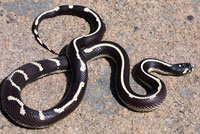 |
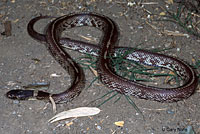 |
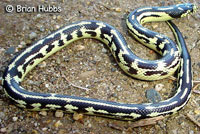 |
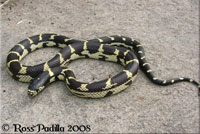 |
 |
|||
| Red: Range of the California Kingsnake in California. Blue: Main areas where aberrant California Kingsnakes are regularly found. |
|||
| ---------------------------------------------------------------------------------------------------------------------------------------------------------------------------------------------------------------------------------- | |||
| Watersnakes - Genus Nerodia Not native California snakes with large blotches and semi-bands. |
|||
| ---------------------------------------------------------------------------------------------------------------------------------------------------------------------------------------------------------------------------------- | |||
Common Watersnake - Nerodia sipedon |
|||
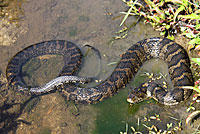 |
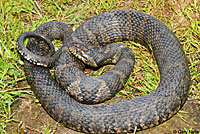 |
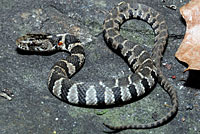 |
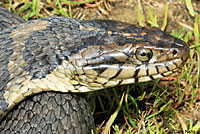 |
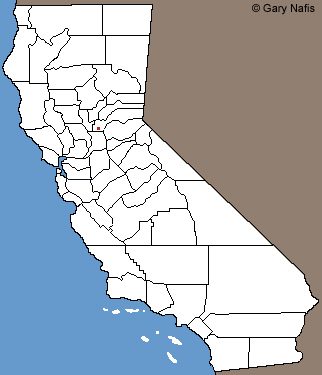 |
|||
| Red dots: Locations where non-native Northern Watersnakes have been established in California |
|||
| ---------------------------------------------------------------------------------------------------------------------------------------------------------------------------------------------------------------------------------- | |||
Southern Watersnake - Nerodia fasciata |
|||
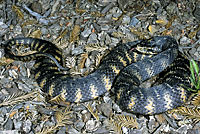 |
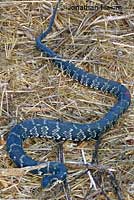 |
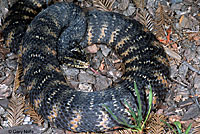 |
 |
| © Jonathan Hakim | |||
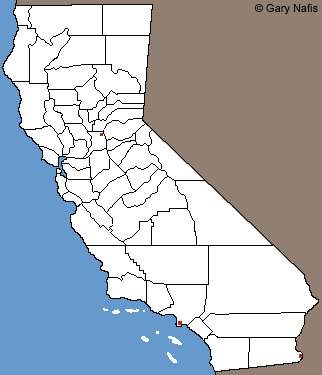 |
|||
| Red dots: Locations where non-native Southern Watersnakes have been established in California | |||
Return to the Top
© 2000 -
